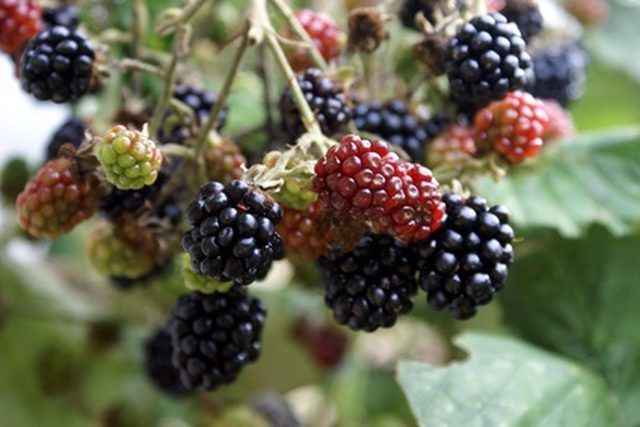Bulbs
Flower Basics
Flower Beds & Specialty Gardens
Flower Garden
Garden Furniture
Garden Gnomes
Garden Seeds
Garden Sheds
Garden Statues
Garden Tools & Supplies
Gardening Basics
Green & Organic
Groundcovers & Vines
Growing Annuals
Growing Basil
Growing Beans
Growing Berries
Growing Blueberries
Growing Cactus
Growing Corn
Growing Cotton
Growing Edibles
Growing Flowers
Growing Garlic
Growing Grapes
Growing Grass
Growing Herbs
Growing Jasmine
Growing Mint
Growing Mushrooms
Orchids
Growing Peanuts
Growing Perennials
Growing Plants
Growing Rosemary
Growing Roses
Growing Strawberries
Growing Sunflowers
Growing Thyme
Growing Tomatoes
Growing Tulips
Growing Vegetables
Herb Basics
Herb Garden
Indoor Growing
Landscaping Basics
Landscaping Patios
Landscaping Plants
Landscaping Shrubs
Landscaping Trees
Landscaping Walks & Pathways
Lawn Basics
Lawn Maintenance
Lawn Mowers
Lawn Ornaments
Lawn Planting
Lawn Tools
Outdoor Growing
Overall Landscape Planning
Pests, Weeds & Problems
Plant Basics
Rock Garden
Rose Garden
Shrubs
Soil
Specialty Gardens
Trees
Vegetable Garden
Yard Maintenance
How to Grow Blackberries in Arizona
How to Grow Blackberries in Arizona. Blackberries can be grown in Arizona and produce a month-long harvest, but the growing and harvesting season depends on in which part of the Southwestern state you are trying to plant a patch. According to the University of Arizona, a blackberry bush's success depends on good site selection, soil type,...

Blackberries can be grown in Arizona and produce a month-long harvest, but the growing and harvesting season depends on in which part of the Southwestern state you are trying to plant a patch. According to the University of Arizona, a blackberry bush's success depends on good site selection, soil type, fertilization, irrigation and pruning. Blackberries, usually associated with the cooler climates of the northern part of the U.S., can be eaten after harvest or frozen for later. Ripe blackberries have a short shelf life.
Things You'll Need
Blackberry plants
Fertilizer
Garden hoses
Mulch
Shovels
Thick gardening gloves and long clothes
Growing Blackberries in Southwestern Arizona
Choose the right variety for the lower elevations of Arizona such as "Rosborough," "Womack," and "Brison," according to Arizona Cooperative Extension's pamphlet "Growing Blackberries in the Low Desert." Most of southernwestern Arizona falls in Arizona Plant Climate zones 4 or 5, meaning mild winters and hot summers, according to the University of Arizona. Keep the roots moist before planting.
Choose an area with sandy loam soil, good drainage and a pH between 4.5 and 7.5. Blackberries need full sun, wind protection, and grow best at elevations above 2,500 feet. The more sun bramble fruits receive, the more fruit they bear.
Plant blackberries from late January through March. Plant bushes 3 to 4 feet apart within a row, and 8 to 10 feet between rows.
Irrigate plants well after planting. Water every three to seven days for the first two months. After established, plants should be water every one to two weeks.
Fertilize plants one month after placement and again in June or July.
Do not expect fruit the first year as blackberries are biennial. Beginning in the third year, plants should produce three to 10 pounds of fruit, ripening in early May and continuing for about a month. "Fruit is sweetest when 'dull black," says the University of Arizona's extension service. Pick fruit every two to three days, but be sure to wear thick gloves, long pants and long-sleeved shirts as bramble thorns can be painful. Some blackberries are thornless. Place fruit in small containers to avoid smashing the fruit.
Growing Blackberries in Northern Arizona
Choose a variety appropriate for the northern part of Arizona, which falls in Arizona Plant Climate zones 1, 2, and 3, meaning cold winters, milder summers and shorter growing season. According to the university's extension service, a few varieties should grow in the northern part of the state, especially north central Arizona. Some of those varieties include Navaho and Choctaw, along with Brazos and Roseborough.
Choose an area with sandy loam soil, good drainage and a pH between 4.5 and 7.5, according to the extension service. Blackberries need full sun, wind protection, and grow best at elevations above 2,500 feet. The more sun bramble fruits receive, the more fruit they bear.
Plant blackberries from February to April, says the extension service. Plant bushes three to four feet apart within a row, and eight to ten feet between rows.
Irrigate plants well after planting. The extension says to water every three to seven days for the first two months. After established, plants should be water every one to two weeks.
Fertilize plants one month after placement and again a few months later.
Do not expect fruit the first year as blackberries are biennial. Beginning in the third year, the plants should produce three to 10 pounds of fruit, ripening in summer and continuing for about a month. "Fruit is sweetest when 'dull black,'" says the University of Arizona's extension service. Pick fruit every two to three days. Place in small containers to not smash the berries.
Tips & Warnings
Buy plant cuttings from a reputable nursery or mail-order catalog to ensure they don't have disease.